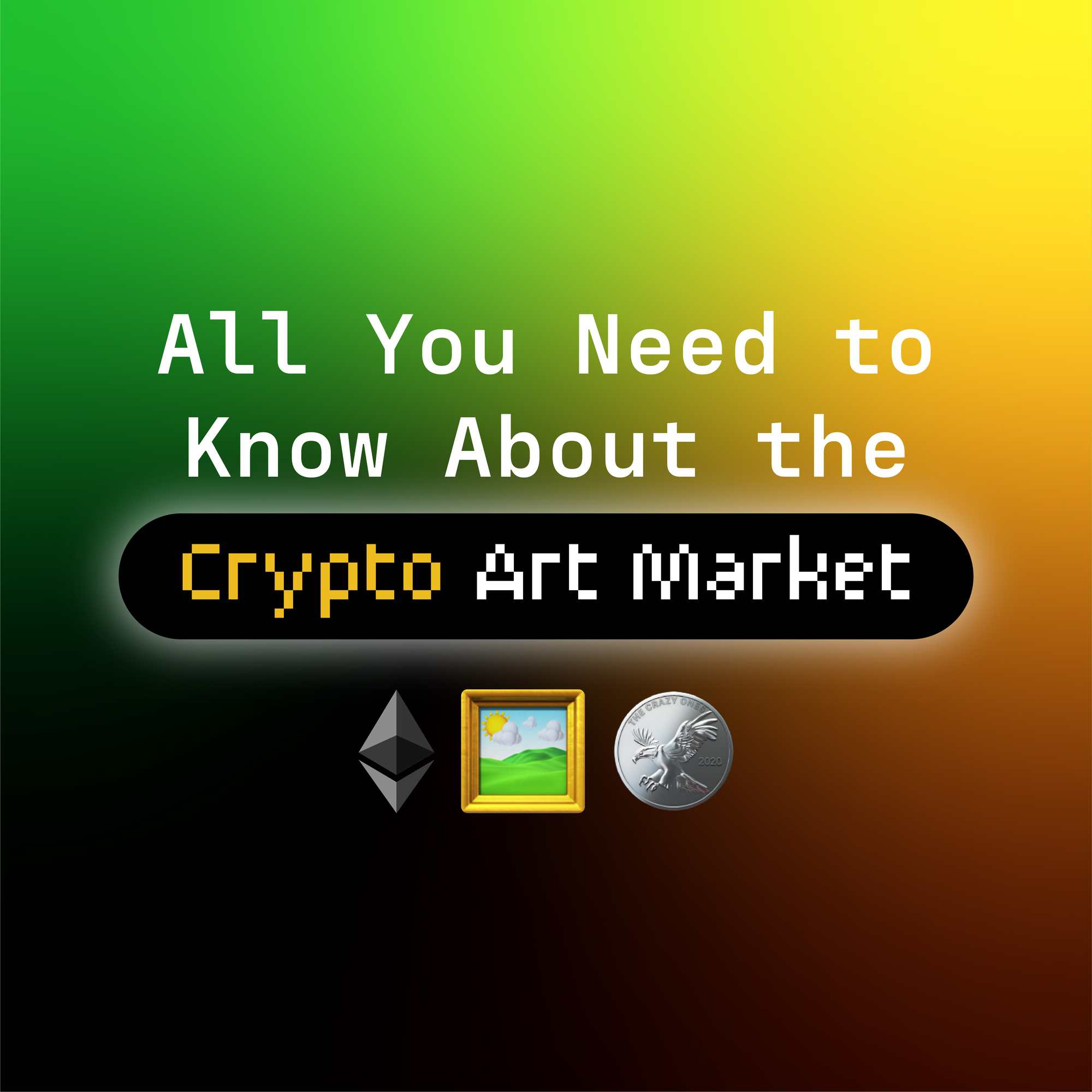All You Need to Know About the Crypto Art Market
By Terrain.art | Nov 30 2021 · 4 min read
A genuine democratic platform for budding artists or a get-rich-quick bubble only waiting to burst? Here’s everything you need to know about crypto art!
Trevor Jones, an Edinburgh-based artist who was struggling to pay his mortgage a couple of years ago, now makes USD 4 million a day. Mike Winkelmann (aka Beeple), who could have well been forgotten as a small-time graphic designer, today appears on American late-night television – a spot usually reserved for Hollywood celebrities and NBA players. Paris Hilton, whose claim to fame has been nothing more than her great granddad’s name, today sells NFT artworks for millions of dollars.
The common factor that binds these people together is that they all have successfully used the new-fangled blockchain-backed technology of non-fungible tokens (NFTs) to sell their artwork. Crypto art is today a billion-dollar business, with everybody – from auction houses to museums, from celebrities to artists – wanting a piece of it. But what is crypto art? How does this crypto art market work? Can this form of art become the dominant form preferred by artists in the future?
Demystifying the Art Form
Crypto Art is a type of digital art that benefits from authenticity of ownership as it is traded through blockchain technology. While digital art has existed for some time now, the possibility to copy works, often limitlessly, has posed a problem for its value. Just like a work by Picasso, which enjoys value because of its authenticity and scarcity, crypto artworks purport to have both, thanks to blockchain technology. While you can copy the digital file of artwork as much as you want, NFTs attached to this new art form offer proof of authenticity and ownership.
Humble Beginnings
The history of crypto art goes back to 2014, when Monegraph, then a fledgling start-up, gave artists blockchain-backed tools to monetize their artworks. Anil Dash and Kevin McCoy, who were frustrated by blatant widespread sharing of digital images without attribution, hacked together an initial version of blockchain-backed digital artwork, which they named, ironically, Monetized Graphics. Other notable artworks of the early crypto era include Rhea Myer’s tokenized MYSOUL on November 11, 2014, the FDCARD created by game studio EverdreamSoft on March 11, 2015, and the Rare Pepe created by Matt Furie on September 9, 2016.
However, it was only when Beeple’s collage of digital images, entitled Everydays: The First 5000 Days, sold for a whopping USD 69 million, that the broader world took notice. By July 2021, it has been estimated that sales of NFTs have risen by USD 2 billion — a trend that has prompted the likes of major auction houses, such as Christie’s and Sotheby’s, to host their own NFT auctions.
Can Crypto Art Replace Physical Art?
While digital art has been integrated in the mainstream art world for some time, cryptographic art has achieved a level of fandom hitherto unheard of in the elite art world. What explains the craze? Experts believe that a combination of factors has led to its popularity.
While digital art can easily be downloaded and copied endlessly, crypto art escapes this issue of mass replication of artwork. Copies of a digital image that we download are worthless. Cryptographic art, on the other hand, enjoys the same level of exclusivity as physical art.
Does this mean that crypto art will replace other forms of art? A recent incident, involving Morons – a physical artwork by Banksy showing an auctioneer selling a framed picture bearing the words, “I can’t believe you morons actually buy this shit,” – is particularly telling. In March 2021, the crypto firm Injective Protocol paid USD 95,000 to buy this artwork and burn it. They sold a digital token of the artwork for USD 380,000. A lame marketing ploy for sure, but the symbolism is hard to miss – crypto art is here to stay and possibly replace its physical forebears.
Only time will tell whether this becomes a reality, but with customers lapping up ‘artworks’ by the likes of Paris Hilton, one can safely say, that the crypto art market is flourishing.
Not all crypto art is worthy of our scorn. Platforms like Terrain.art bring together a diverse range of young, talented artists from South Asia to offer them a safe, blockchain-backed means of selling their works. Check out their artworks here.

